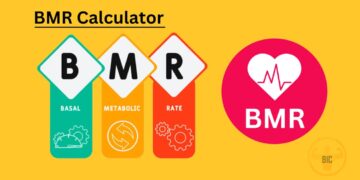If you’re a fitness enthusiast looking to build muscle and sculpt a well-defined physique, you’ve likely heard of split training routines. These specialized workout plans have gained immense popularity in the bodybuilding world due to their efficacy in targeting specific muscle groups for maximum growth and development. In this article, we’ll delve into the concept of split training routines, explore their benefits, and provide you with valuable insights on how to structure an effective split routine tailored to your fitness goals.
Understanding Split Training Routines
Split training routines involve dividing your weekly workout sessions into distinct muscle group-focused sessions. Unlike full-body workouts that engage multiple muscle groups in a single session, split routines allow you to dedicate ample time and effort to individual muscle groups. This targeted approach can lead to greater muscle hypertrophy and enhanced muscle definition.

The Benefits of Split Training
Optimal Muscle Focus
One of the primary advantages of split training is the ability to give each muscle group the attention it deserves. By focusing on a specific set of muscles during a workout, you can perform more exercises, sets, and reps, effectively stimulating muscle growth.
Enhanced Recovery
Split routines often involve training fewer muscle groups per session. This allows for better recovery as you’re not overloading your body with excessive exercises. Adequate recovery is crucial for muscle repair and growth.
Advanced Training Techniques
With split training, you can incorporate advanced techniques such as drop sets, supersets, and isolation exercises. These techniques can intensify the workout, leading to greater muscle activation and growth.
Customized Training
Split routines can be tailored to individual goals and weaknesses. If you’re aiming to bring up a lagging muscle group, you can allocate more training volume to that specific area.

Structuring Your Split Training Routine
Choosing Your Split
Before diving into split training, it’s important to choose a split that aligns with your goals and availability. Common splits include:
- Push-Pull-Legs (PPL): Focuses on pushing exercises (chest, shoulders, triceps), pulling exercises (back, biceps), and leg exercises.
- Upper-Lower Split: Divides workouts into upper body and lower body days.
- Body Part Split: Dedicates each workout to a single muscle group (e.g., chest day, back day, leg day).
Setting Up Your Routine
Once you’ve chosen a split, organize your weekly schedule. Here’s an example of a 4-day PPL routine:
- Day 1 – Push: Bench press, shoulder press, tricep dips.
- Day 2 – Pull: Pull-ups, rows, bicep curls.
- Day 3 – Legs: Squats, lunges, hamstring curls.
- Day 4 – Rest: Rest and recovery.

Maximizing Effectiveness
Progressive Overload
To ensure consistent progress, gradually increase the weights you lift over time. This progressive overload stimulates muscle growth by challenging your muscles to adapt to heavier loads.
Nutrition and Rest
Pair your split routine with a balanced diet rich in protein to support muscle repair and growth. Additionally, prioritize adequate sleep for optimal recovery.
Conclusion
Incorporating split training routines into your bodybuilding journey can yield remarkable results in muscle size and definition. By targeting specific muscle groups with focused intensity, customizing your routine, and emphasizing proper nutrition and rest, you’re on your way to achieving your desired physique.
FAQs about Split Training Routines
Is split training suitable for beginners?
While beginners can benefit from split training, it’s advisable to start with a full-body routine to build a foundation of strength and overall muscle balance.
How many days per week should I train using a split routine?
The frequency of training depends on the split you choose. Some splits require 3-4 days per week, while others may involve 5-6 days.
Can I switch between different split routines?
Yes, you can switch between splits to prevent plateaus and keep your workouts engaging. However, allow your body to adapt before making changes.
Can I incorporate cardio into my split routine?
Absolutely. Adding cardio on rest days or after workouts can support cardiovascular health without significantly affecting your muscle-building efforts.
How long should a split training session last?
Aim for 45 minutes to an hour per session. Keep the intensity high and focus on proper form for optimal results.













































